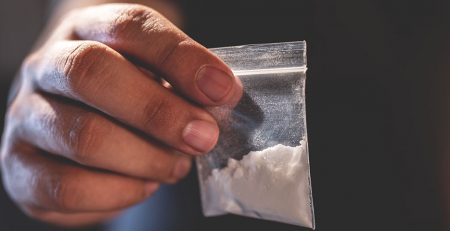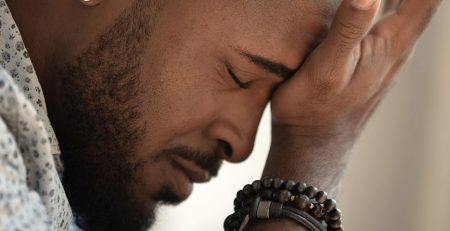The history of bipolar disorder is thought to begin in medical literature written by Hippocrates (460-370 B.C.), a physician in ancient Greece who’s frequently referred to as “the father of medicine.” He was the first that we know of to document the change in moods that people with this condition often experience. Today, bipolar disorder is known as a mental health disorder associated with episodes of mood swings ranging from depressive lows to manic highs. Starting from Hippocrates’ work to today’s scientific discoveries, we’ll be looking into bipolar disorder’s long and interesting history.
A Brief History of Bipolar Disorder
Discovery of Mood Swings in Ancient Greece and Rome
Hippocrates was the first to document two extreme fluctuations in mood: feeling extremely low (what we now know as depression) and feeling extremely excited and energized (mania). Many of the terms he came up with to describe the varying symptoms of bipolar disorder were based on humorism, a system of medicine detailing the supposed makeup of workings in the human body that was adopted by Ancient Greece and Rome.
Humorism is a system of medicine that describes the makeup of the human body. Physicians and medical professionals in Ancient Greece and Rome believed that any imbalance in four distinct body fluids (yellow bile, red bile, black bile, and phlegm) directly influenced the person’s temperament and health.
In his work, Hippocrates described this state of extreme sadness as “melancholia,” which was a combination of the word “melas,” meaning black, and “chole-,” meaning bile. Together, both terms mean “black bile,” which is an aspect of humorism.1
On the other hand, the extreme highs and energy that people with bipolar disorder experience, called mania, was thought to be caused by too much yellow bile. Another Greek physician, Aretaeus of Cappadocia, is credited with being the first person to describe the concept of a mood spectrum.
Aretaeus was also the first to establish that melancholia and mania were associated with a problem in the brain rather than an imbalance in certain bodily fluids. Plato (428-348 B.C.), an Athenian philosopher, eventually went on to describe mania in two of his writings as well: “One involving a mental strain that arises from a bodily cause of origin, the other divine or inspired.”2
Together, Hippocrates and Aretaeus distinguished between the two, and each worked to prove that melancholia and mania were biological functions rather than psychological reactions to a particular trigger or situation. Together, these historical figures paved the way to the discovery of a legitimate and life-changing mental health disorder.
When Was Bipolar Disorder Discovered?
Although Ancient Greek and Roman work drew up the road to the discovery of bipolar disorder, the finishing line was actually discovered in the mid-19th century. You could say that bipolar disorder was discovered by a French psychiatrist named Jean-Pierre Falret around 1850, who created a new and separate disorder that encompassed both depression and mania symptoms called “folie circulaire”.3
Before this, the two were considered separate conditions with different symptoms. In folie circulaire, someone experienced a continuous cycle of depression and mania with varying periods in between.
Around the same time, another French psychiatrist and neurologist, Jules Baillarger, came up with a condition he referred to as “folie à double forme.” His definition referred to periods of mania and depression without intervals in between. He believed that eventually, one mood would simply turn into the other.
Then came another German psychiatrist named Karl Kahlbaum, who grouped mental disorders into two different categories: those that caused limited mental impairment and those that caused complete mental impairment. By the end of the century, German psychiatrist Emil Kraepelin (who’s referred to as the founder of modern psychiatry) combined all types of affective disorders into a condition called manic-depressive insanity, a theory that was adopted for a while.
Kraepelin’s Manic Depressive Insanity and Paranoia in 1921 detailed the difference between manic-depressive and praecox, which is now known as schizophrenia. He’s believed to be the first to seriously study mental disorders and to recognize their biological causes.
Addition of DSM Criteria for Bipolar Disorder
It was in the 1950s that the first Diagnostic and Statistical Manual of Mental Disorders (DSM-I) was created by experts to standardize and categorize mental illness. The DSM-I ended up breaking down Kraepelin’s manic-depressive insanity into separate categories: manic, depressed, and other.
Thus, the cycle of bipolar disorder symptoms was categorized as “other.” Eventually, when the second edition of the DSM came out in 1968, some things changed. Instead of manic-depressive insanity, the condition became manic-depressive illness.
The category of “other” was also switched to “circular,” which was referred to as “at least one attack of both a depressive episode and a manic episode.” It wasn’t until the third edition of the DSM was released in 1980 that bipolar disorder was finally mentioned as such.
This was also the introduction of today’s criteria for defining and diagnosing bipolar disorder, and the first time this condition was separated from generalized depression. This version was also the first to do away with the term “mania” to prevent the use of the term “maniacs.” Now in its fifth edition, the DSM is considered the leading manual for diagnosing and treating mental health disorders.
Today
Today, four types of bipolar disorder have been identified and categorized in the DSM-5: bipolar I, bipolar II, cyclothymic disorder, and unspecified bipolar disorder. Great advancements have been made regarding our understanding of bipolar disorder, many of which have improved the diagnosis and treatment of this condition for many.
Professional, specialized treatment is available for individuals with bipolar disorder. However, there’s still plenty of work that needs to be done to make sure that everyone who needs help gets it.
With that said, if you have a loved one who’s showing signs of bipolar disorder, don’t hesitate to reach out for help. Our South Florida luxury rehab offers bipolar disorder treatment among a variety of other programs for mental illness.
We even offer dual diagnosis treatment for those with co-occurring mental health and substance use disorders. Whether it’s addiction or mental illness you need help with, our Palm Beach luxury rehab is here for you. To learn how you or a loved one get started with treatment, call Seaside Palm Beach today at 561-677-9374.
Related Reading:
Sources:













